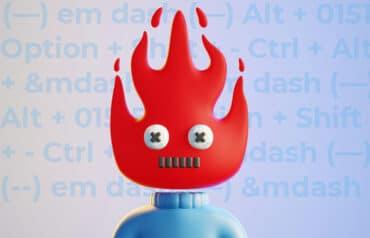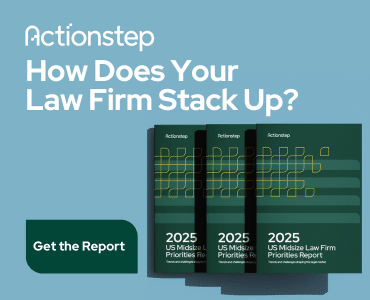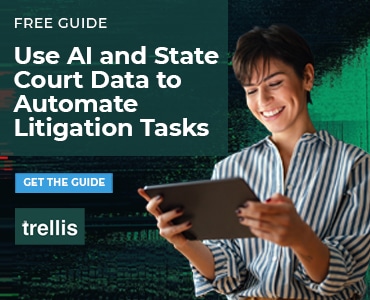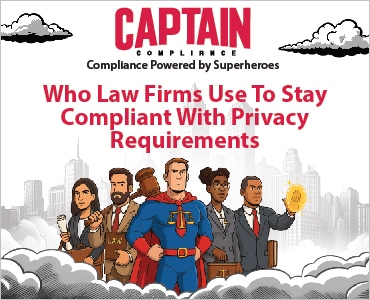In software development circles, the arrival of generative AI has given rise to a programming approach known as “vibe coding.” Simply give the AI a prompt for the piece of functionality you’re trying to build, and it will spit out a piece of code you can use. Should lawyers take a page out of the coders’ book and start embracing “vibe lawyering”?
Or is giving in to the AI vibes playing with fire?
Table of contents
Three Tips for Vibe Lawyering
With vibe coding, programmers can shift from pure manual code-writing to a project management role, guiding Gen AI and refining the results. Lawyers should feel free to harness the power of Gen AI — judiciously and ethically — and vibe away.
That said, here are three tips to keep in mind.
Tip No. 1: No Blank Slates for Formal Agreements
One trick to successful vibe lawyering is figuring out which use cases it’s suited for and which use cases it isn’t.
One obvious application of Gen AI for lawyers is to help with drafting, but not every drafting scenario is a good fit. For instance, you shouldn’t be asking AI to create an NDA, a commercial lease, or some other formal agreement from scratch.
Clients expect consistency, reliability and repeatability from legal service providers. If lawyers strategically repurpose their templates and other know-how, then 90% of the clauses and language in an agreement they put together will be identical every time. (There might be a couple of bits that change depending on negotiation, but for the most part, the output will be very consistent.)
That consistency — and the best practices baked into the language that creates that consistency — goes out the window if you give AI a blank slate and say, “Hey AI, create a share purchase agreement for me.”
Tip No. 2: Make Sure to Ground It
The way to tiptoe around this potential pitfall is by grounding the material AI is able to draw upon when creating documents. Lawyers with a single centralized repository for documents have an advantage, as that makes it easier to identify the trusted data sets that AI can leverage.
However, it is still necessary to differentiate between useful and irrelevant information within the repository. For example, you want to point the AI towards the final approved documents rather than multiple iterative drafts. Human involvement is crucial for this curation process (AI can’t do it on its own), and lawyers should perform this task regularly to ensure the best available data is consistently provided to the AI.
Note that the security attached to your document repository will limit AI’s access to certain files within the system. This means Gen AI can provide different responses based on different user access permissions. In a solo legal practice, this isn’t a problem, but even within a two- or three-person practice (let alone a 50– to 100-person practice), this situation can lead to inconsistencies where different lawyers receive varied results for the same query, depending on what level of access they have.
To address this, lawyers should identify which documents can be widely shared. For example, initial discussions about handling deals or strategies are typically confidential, while final documents related to public deals may be more accessible. Additionally, to achieve consistent responses and optimal outcomes, you might consider adopting a more open security approach for knowledge assets and best practices content.
Tip No. 3: Streamline your Summaries
While drafting formal agreements might not lend itself to a casual “vibe lawyering” approach unless the necessary guardrails are in place, there are some drafting scenarios where “vibe lawyering” might actually find fertile ground: Think here of summary notes.
Rare is the lawyer who hasn’t had to distill complex information into digestible insights for their clients. For instance, in response to regulatory changes, a specialist might review new legislation, extract the material changes, and produce a concise summary note for the client’s benefit. In the litigation realm, a lawyer might craft a summary note from lengthy judgments or case files, highlighting key facts, participants and judicial decisions.
Using AI to streamline the creation of summary notes can provide a massive efficiency gain by quickly reading and summarizing material. This provides a solid starting point that the lawyer can then refine as needed. In the “vibe coding” world, this is the equivalent of quickly establishing a “minimum viable product” or software prototype that the developer can then tweak and adjust.
The Verdict on Vibe Lawyering
So, should lawyers give in to the vibes?
The bottom line: For drafting scenarios where the output is something like a summary note rather than a legally binding document, lawyers should feel free to vibe away. This distinction makes clear that AI needs to be applied wisely and judiciously for the best results. By identifying the right use cases and grounding AI applications in high-quality, curated data where needed, legal professionals can safely and effectively use Gen AI without creating problems for themselves or their clients.
Understanding both how and when vibe lawyering is a viable approach is the key. And while it shouldn’t need saying, rigor is the final step: Proof like your reputation depends on it, because it does.
More Tips on Using AI Effectively and Ethically
- Generative AI for Lawyers: From Fear to Functionality, How Lawyers Can Ethically Integrate AI into Their Practice
- Advancing Litigation Support: 3 Ways to Fuel Innovation Within Your Litigation Team
- AI in Law Firms: The AI Revolution in the Business of Law
Image © iStockPhoto.com.

Sign up for Attorney at Work’s daily practice tips newsletter here and subscribe to our podcast, Attorney at Work Today.















